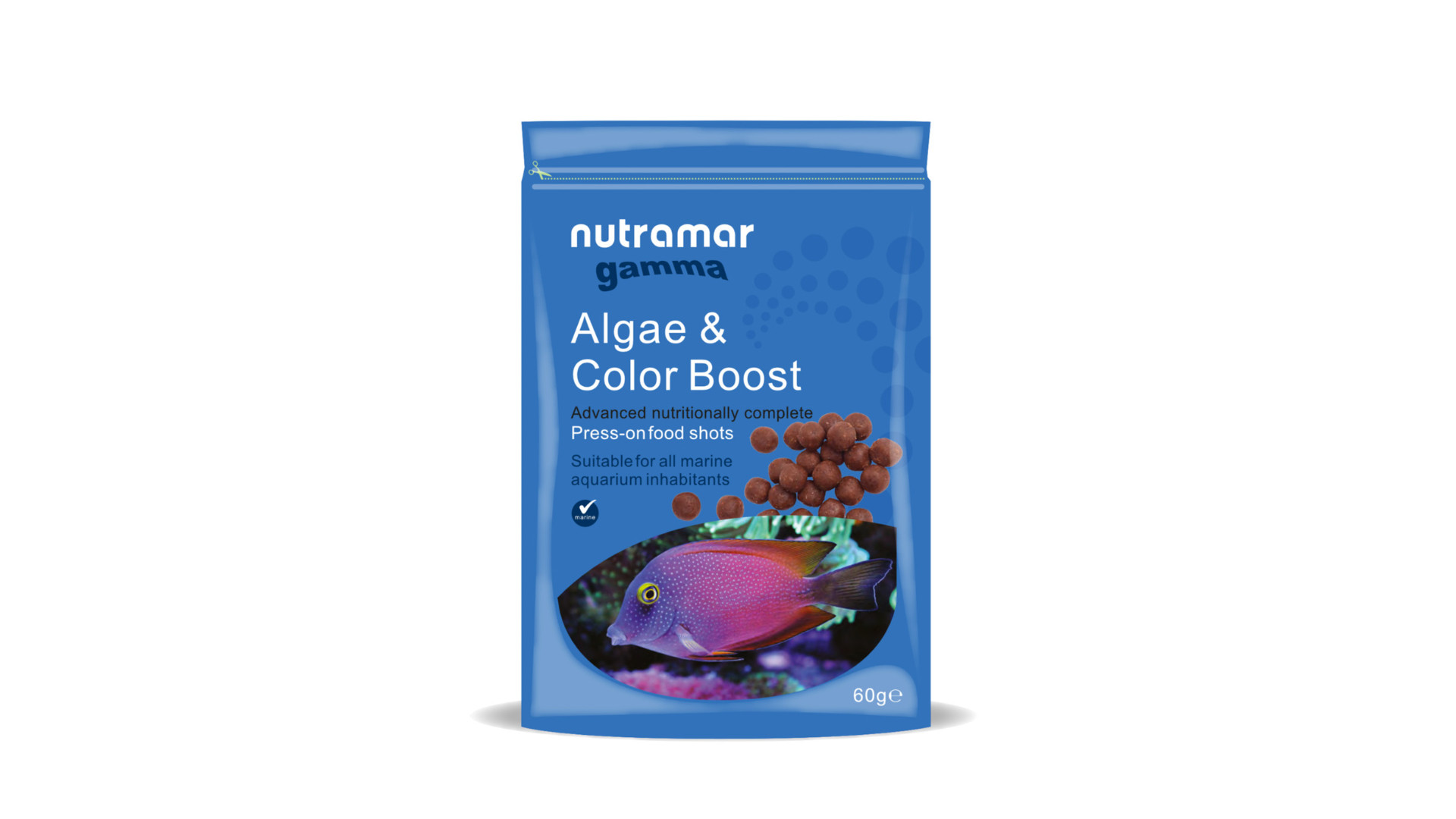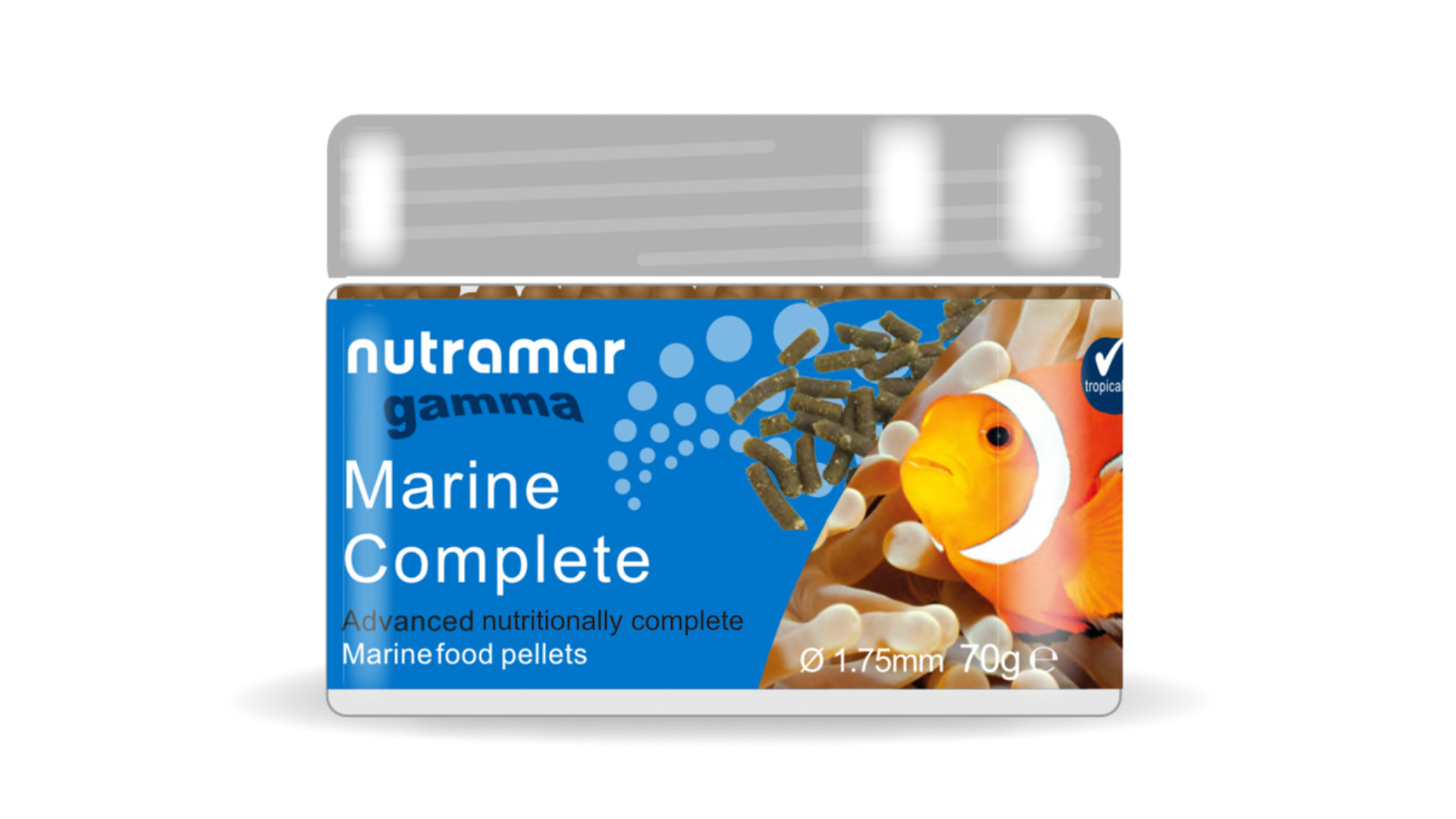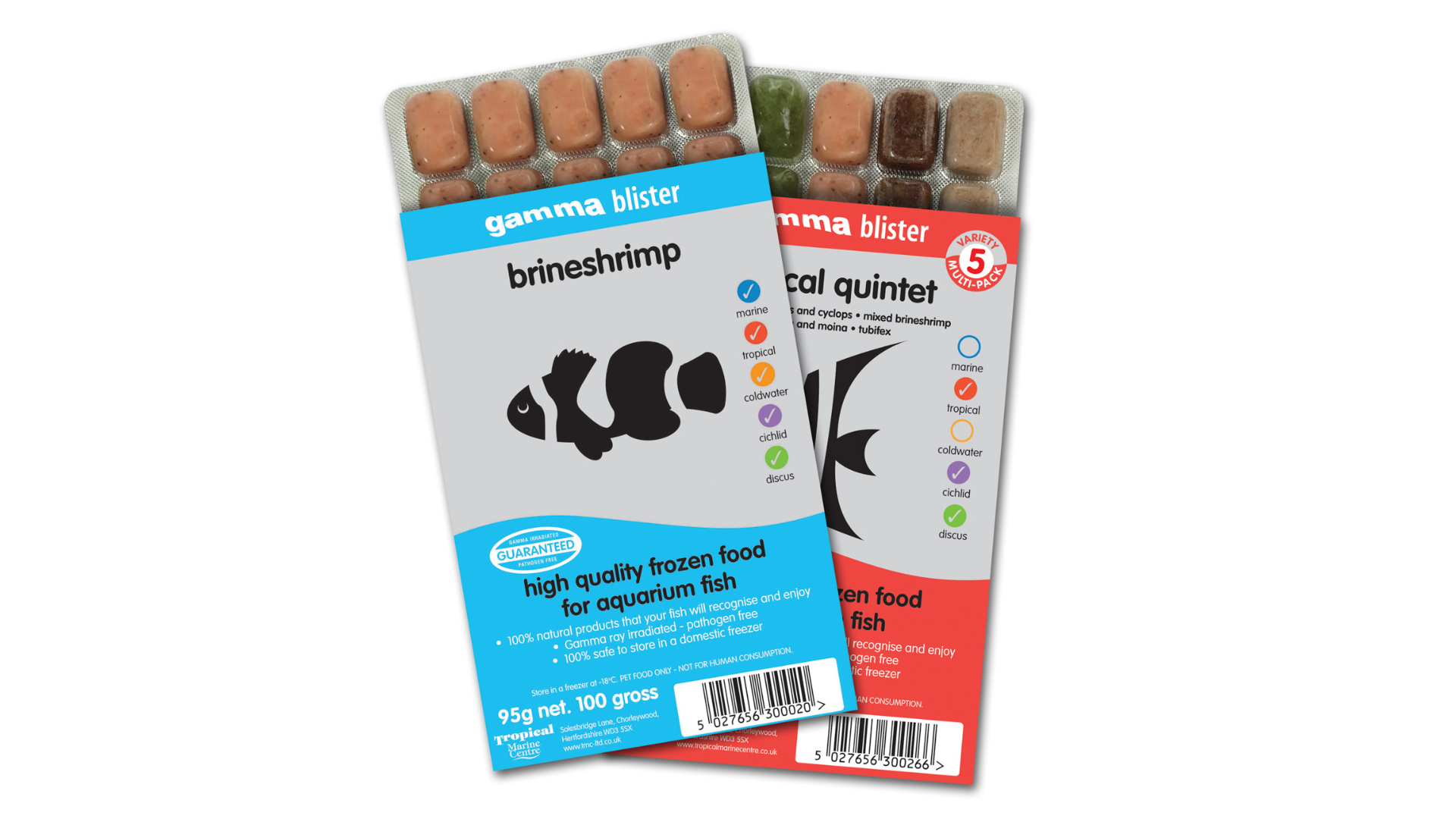Feeding Your Marine Aquarium

How much food to feed your marine fish is a surprisingly hard question to answer, and also one of the most overlooked aspects of success with your aquarium. Well-fed fish are happy and have quite robust immune systems; this makes them very resilient in regard to most common aquarium ailments. However, fish and invertebrates living in water that have a high nutrient load and/or prolific algae growth stealing oxygen at night will be stressed and thus less resistant to those same diseases. When your “amount of food to water chemistry balance” is perfect, your fish will be very strong, and your beneficial organism growth will outstrip the growth of things like nuisance hair algae. Obviously, this is an aspect of aquarium keeping that goes vastly beyond how your tank looks.
A quick Google search will give you a highly varied advice on how much to feed, and almost none of them are totally right. This is because every fish is different. Some fish are plodding eaters, other fish are voracious. Some small active fish will need several meals a day, some sedentary predators only need a meal every couple of days. So where to start with how much food to feed? First, we should understand what is actually in your aquarium. All the fish should be grouped by their feeding type. There are several broad groups to lump your feeders into:
Activity / Dither fish – These are fish that are very active most of the time and require small meals multiple times per day. These are generally planktivores used to eating things out of the water column. Think fish like Anthias, Chromis, etc. This group could (and maybe should) be further divided into a second subclass of fish that need this kind of feeding schedule but are also shy or prone to hiding like Fairy Wrasses and Dartfish.
Generalists – These are fish that are well acclimated to captive diets and not all that picky about it. They generally need a little food, once or twice a day. Think Clownfish, most Damsels, Pseudochromis, Halichoeres / Thallasoma wrasses, Fang Blennies etc.
Grazers – These are fish that basically constantly eat, generally by picking things off rocks / décor and sometimes out of the water column. Think things like Rabbitfish, Tangs, Macropharyngodon Wrasses Angels, Algae Blennies and some Butterflies.
Sedentary Predators: These fish would usually be hunting live food, and may only need a meal every couple of days: think Lionfish, Anglers, Groupers, Eels, etc. These fish frequently need target feeding.
Active predators: these are fish that still like big messy meals, but are more active and thus need more food, more regularly, think fish like Triggerfish, Puffers, Snappers and the like. They can usually be fed without needing to target feed them.
Specialists: every good list has a catchall, and this one is ours today. There are a few fish that just don't work in any of these other lists. These are fish that either require a certain food, or a specific delivery. They generally make bad choices for tanks that have many different fish in them. Some of these fish are easy to keep, and some are trickier. Think fish like Seahorses, Pipefish, Dragonettes, Some Butterflies, and Sifter Gobies.
For the active group, the generalists, and the active predators, a good rule of thumb for finding a starting point in regard to how much food they need is to take small, measured (we like to use weight) amounts of food and keep adding them until feeding activity slows down or you see some of the food go uneaten to the bottom of the aquarium. This amount is the total amount that should be fed to the aquarium over 24 hours. If you have a lot of the fish in the active/dither group, you probably should spread this out over at least two feedings and ideally more, but don't increase the total volume of food. If you have a lot of fish in the generalist and active predator group, one is probably fine. Obviously, your predators are going to need larger meals and pellets. Nutramar's pellets come in a few different, convenient sizes; buy whatever size is easily consumed by your fish.

Grazers will need different food, but that doesn't mean they can't be blended with the other groups. These will need food specific to their needs but will need it fed in a way that they are used to consuming. Attaching algae like Nutramar's Nori, or Ogo to rocks or food clips is a good way to keep these kinds of fish engaged. Adding Nutramar's Marine Algae Boost Shots is a great way to get the grazing herbivores a balanced diet, fed in a way that they are accustomed to. For the Grazers who don't fall into the primarily herbivore category, Nutramar also makes a “Marine Complete” Shot, and we get excellent results with this in house.
Your tanks with sedentary predators will need target feeding, and we recommend a feeding stick for this. There are some appropriate live foods for these fish, and if you have access to a clean culture of Saltwater Mollies, Guppies, or the like, you should feel free to feed these sans stick. For those of you depending on thawed foods, animating them with a feeding stick will help ensure the safety of your fingers. Foods like Krill, Whole Fish, Whole Mussel and Whole Cockle from TMC Gamma can all be given some life with a feeding stick. We feed these (and other foods from Gamma) in house. We love them because they are flash frozen, nutritious, and gamma irradiated to ensure we aren't adding any pathogens to our system. In regard to how much to feed these fish, start small and watch. Feed them until they stop taking food and remove whatever they don't eat. Most of them won't need another meal for a couple days. Then you can start to fine tune this process (check the second paragraphs down).

Your specialist fish are going to have to be studied on a case-by-case basis. Obviously, if you could feed them all a constant supply of live gut loaded pods, many of the fish in this category would do pretty well on this diet. In reality, each fish in this class is going to need some specific attention. Luckily, we probably have an article on whatever fish you’re looking for, or that article is in the works. Ask for species features on our social media channels and we'll add your ideas to the article cue!
Finally, for all these classes of fish and how to feed them, next comes the fine tuning of this process. You need to monitor your individual fish, are they getting too fat? Telltale signs of this are: lots of excess waste, over thick body / distended belly and disinterest in feeding times. On the other end of this spectrum, fish that need more food will start to have sunken belly and in extreme cases will get very thin or lose their usual vibrancy (though this can also be an indicator that they need a different food than what you are offering.) Make adjustments to their diet accordingly and do so slowly. Making small adjustments based on close observation will prevent you from having a myriad of problems that arise from over feeding, especially the nutrient spikes and correlated immunity challenges.
As you read through this, we hope you started to group some fish in your head and make some logical conclusions about feeding and housing. Obviously, some of these groups will be harder to maintain with other groups. For example, if you have fish that are notoriously shy, they aren't going to get enough food if you keep them with fish that are boisterous. It’s pretty difficult to get enough food down to a Goby / Shrimp pair through layers of aggressive feeders above. Plan your aquarium, and your feeding style to ensure that everything gets an appropriate, nutritious and varied diet; then fine tune the amounts and your fish will be healthier, and your tank's ecosystem will be more robust and resilient than ever before. Choose quality foods from reputable manufacturers like Nutramar, TMC Gamma, and others and you won't have to worry if your fish are getting the nutrition they require.